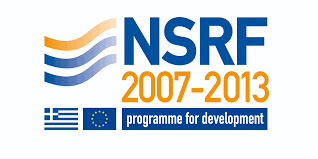SYMBIOMICS
Title: Symbiotic bacteria and “omics” technologies towards the development of novel and environment-friendly control methods of insect pests: the case of the Mediterranean fruit fly
Funding Source: NSRF Excellence
Budget IMBBC: 41,740€
Start / End Date: 2012 - 2015
Project Progress: 100%
Research Directions:
Functional and Comparative genomics
Description:
The Mediterranean fly Ceratitis capitata (Wiedemann) belongs to the Tephritidae family of Diptera and is the most polyphagous species of the genus with a wide geographical distribution. It grows on more than 350 hosts and is considered one of the most important entomological enemies of fruit trees worldwide. Its treatment is still based on the application of insecticides, although in recent decades, the accumulation of knowledge about the biology of the insect has led to the development of alternative treatment methods such as the Sterile Insect Technique. The Sterile Insect Technique is applied to combat the Mediterranean fly in regional, national, and international programs. Despite its widespread application, significant problems still exist regarding the effectiveness of this method. The main ones concern the survival, dispersal, and sexual competitiveness of sterile males released into the wild to deal with the target population. It should also be noted that recent studies support that symbiotic bacteria that respond to insects play a catalytic role in the biology, physiology, ecology, and evolution of their hosts. Based on the above, the necessity to treat the insect as a superorganism, i.e. the host and the symbiotic bacteria are to be "treated" as a single entity. Therefore, any (biological and non-biological) approaches to population control of the insect must be approached through systems biology. In particular, the present project will use -omic technologies to study the (meta)genome, transcriptome, and proteome of the insect. Also, it will be based on the knowledge of the biology of both the host and the symbiotic bacteria to develop and apply in semi-natural conditions new environmentally friendly methods of population control of C. capitata. The proposed approach can be a model for the development of similar methods for other harmful insect species for agriculture, the environment, and health.


